Canon EOS 6D review.
The EOS 6D is Canon's most affordable full-frame DSLR. The camera sits between the EOS 7D and the outgoing 5D Mark II. In the fall of 2012 at the Photokina exhibition Nikon presented the main competitor of our camera - Nikon D600. Can the Canon EOS 6D compete with other full-frame DSLR cameras? You will learn about this by reading this review. Appearance
The body of the EOS 6D camera is quite durable, made of magnesium alloy, the upper part is made of polycarbonate, which is reinforced with fiberglass (this is necessary for the normal operation of Wi-Fi and GPS receivers). The screen is fixed, the number of controls is reduced to the required minimum. The camera is very similar in appearance to the EOS 60D.As for a full-frame SLR camera Canon EOS 6D is very small and light (weight - 770 grams), although it fits snugly in the hand. Like the 5D Mark III, the EOS 6D is powered by a lever built into the shooting mode dial (much more convenient than turning on the 5D Mark II). Simply put, the Canon EOS 6D is an EOS 60D with a fixed display and a touch of 5D Mark III.The hot shoe supports [EX] series (/ index.php? Action = group & slug = flash & sort = popular & v% 5B1% 5D% 5B% 5D = Canon) from Canon. There is no built-in flash, and there is also no built-in remote flash control module (you will have to use special accessories).Above and to the right of the display are buttons for autofocus control, ISO settings, and white balance. Most of the controls are very conveniently located. You can switch to Live View mode using a separate large button (START / STOP) with a lever for switching between viewing on the screen and recording video. Even with gloves on, it won't be difficult.There is no separate navipad, it is in a single block with a navigation disk and a SET button in the middle. Next to the monochrome display are the AF-ON and AE lock (with an asterisk) buttons. Nearby is the focus point selection button - after pressing it, you can move the focus point using the front (rear) dial or navipad.An infrared sensor is located on the front of the case, and next to it is a visual self-timer indicator (red light). The EOS 6D does not have an autofocus illuminator, but according to the manufacturer, this will not prevent the camera from focusing even in moonlight.An on / off lever is built into a circular shooting mode dial that can be turned to either side.The mode dial contains basic (A + -CA-SCN) and creative (P-Tv-Av-M-B-C1-C2) shooting zones. The camera has a selection of ready-made scene programs (SCN mode) - a vivid example of how the manufacturer takes care of novice photographers. To prevent accidental switching of the mode dial, it is equipped with a central lock button.The EOS 6D's LP-E6 battery pack is one for all! It will also fit 5D Mark II, 5D Mark III and EOS 60D.The manufacturer guarantees that an average of 600-700 photos will be taken until the battery is completely discharged (in some cases, you can take up to 1300 photos).On the left, under the rubber caps on the camera body, there are standard interfaces: an N3 connector for a remote control, a stereo microphone connector, a high-speed USB and an HDMI mini output.
Next to the monochrome display are the AF-ON and AE lock (with an asterisk) buttons. Nearby is the focus point selection button - after pressing it, you can move the focus point using the front (rear) dial or navipad.An infrared sensor is located on the front of the case, and next to it is a visual self-timer indicator (red light). The EOS 6D does not have an autofocus illuminator, but according to the manufacturer, this will not prevent the camera from focusing even in moonlight.An on / off lever is built into a circular shooting mode dial that can be turned to either side.The mode dial contains basic (A + -CA-SCN) and creative (P-Tv-Av-M-B-C1-C2) shooting zones. The camera has a selection of ready-made scene programs (SCN mode) - a vivid example of how the manufacturer takes care of novice photographers. To prevent accidental switching of the mode dial, it is equipped with a central lock button.The EOS 6D's LP-E6 battery pack is one for all! It will also fit 5D Mark II, 5D Mark III and EOS 60D.The manufacturer guarantees that an average of 600-700 photos will be taken until the battery is completely discharged (in some cases, you can take up to 1300 photos).On the left, under the rubber caps on the camera body, there are standard interfaces: an N3 connector for a remote control, a stereo microphone connector, a high-speed USB and an HDMI mini output. Screen
To be honest, the screen was a bit disappointing. Unlike the EOS 650D, the EOS 6D did not use a touchscreen display, the screen resolution is only 1,040,000 pixels, there is an air gap between the body and the display, there is no automatic brightness adjustment. Viewfinder
The viewfinder is ordinary: bright and large with approximately 100% frame coverage, does not have a translucent LCD monitor, when shooting, it has no grid and permanent focus points (all of them are visible regardless of the choice), information about shooting parameters is displayed below. True, for displaying the grid, it is possible to use focusing screens (by analogy with the EOS 5D Mark II) of the Eg-D and Eg-S types. Camera in operation
The camera uses a simple 11-point AF system - that's 2 points more than the 5D Mark II and 8 points less than the EOS 7D. But the 5D Mark III presented this year has surpassed everyone - a 63-point autofocus system!However, the EOS 6D only has one cross-type AF sensor, which is located in the center. Even the budget model EOS 650D has 9 such cross sensors! Autofocus is fast (even the 5D Mark II focuses slower, which becomes very noticeable in low light).According to Canon, it is also capable of focusing in moonlight (in practice, the camera focused very slowly, but without the “shot-or-miss” effect).The camera has only one slot for SD memory cards.Before the camera slows down to 2 frames / sec, 20 frames in RAW format will fit in the clipboard.The good news is that the EOS 6D has a quiet shutter mode (same as the 5D Mark III):The sounds emitted by the EOS 6D are almost inaudible (unlike the noisy 5D Mark II) - this is a much needed shooting mode if you want to be overlooked. Menu
There are as many as 15 tabs in the main menu of the camera!All control keys can be reassigned for yourself: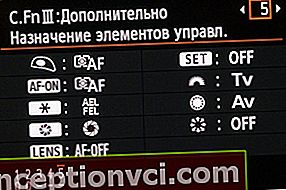 Autofocus can be adjusted more precisely:With any compatible lens, there will be no problem with front focus / back focus adjustment. With the value of sensitivity (ISO), the camera works with very flexible settings: ISO can be controlled manually, set the range for automatic and manual selection.
Autofocus can be adjusted more precisely:With any compatible lens, there will be no problem with front focus / back focus adjustment. With the value of sensitivity (ISO), the camera works with very flexible settings: ISO can be controlled manually, set the range for automatic and manual selection.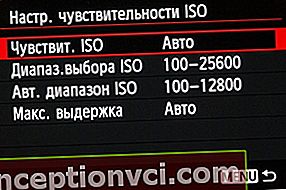 In this case, you can set a different exposure duration.
In this case, you can set a different exposure duration.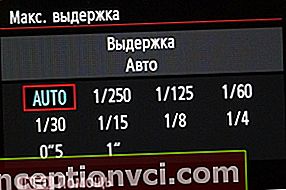 By the way, if you press the INFO button in the ISO menu, the camera will immediately switch to automatic settings - an analogue of the “green button” in Pentax cameras.
By the way, if you press the INFO button in the ISO menu, the camera will immediately switch to automatic settings - an analogue of the “green button” in Pentax cameras.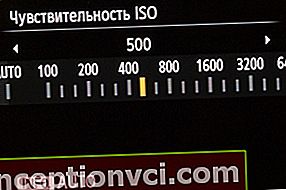 Using the built-in editor, you can extract the JPEG format from a RAW file with all kinds of corrections and corrections for various parameters:Among all the shooting modes, I would especially like to mention the “Handheld Night Photo” mode: the camera takes four consecutive shots (even without a tripod) and combines them into one - this leads to a reduced noise level, while the image sharpness does not deteriorate!
Using the built-in editor, you can extract the JPEG format from a RAW file with all kinds of corrections and corrections for various parameters:Among all the shooting modes, I would especially like to mention the “Handheld Night Photo” mode: the camera takes four consecutive shots (even without a tripod) and combines them into one - this leads to a reduced noise level, while the image sharpness does not deteriorate! In automatic shooting modes, JPEG color conversion (Picture Style) settings are now referred to as “shooting ambiences” and white balance has been renamed to “mood”.
In automatic shooting modes, JPEG color conversion (Picture Style) settings are now referred to as “shooting ambiences” and white balance has been renamed to “mood”.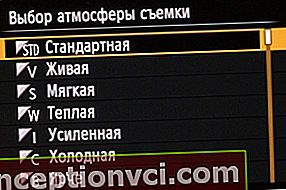 The camera has an electronic horizon level:In order to quickly assess the sharpness of the resulting image, Canon has redesigned the way to enlarge images:
The camera has an electronic horizon level:In order to quickly assess the sharpness of the resulting image, Canon has redesigned the way to enlarge images: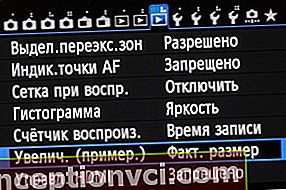
High dynamic range (HDR)
This function is a must in modern photography! And here she, of course, is. Bracketing range is set automatically and manually, there are several blending modes. The function will be very useful when shooting statistical objects (landscapes, architecture), however, when photographing fast-moving objects, it will not help you much, since the camera records files for about 6-8 seconds, and then glues them into an HDR image. This function is available for both single shot and burst shooting, but only in JPEG format (in the 5D Mark III, this function works for RAW format as well). Wi-Fi and GPS
At last! In the modern world, instant uploading of images to the network is very important. And many thanks to Canon for this opportunity! But the possibilities of Wi-Fi connections are not limited to this - along with the EOS 6D, Canon introduced the Project 1709 service, designed to store photos on the Web and organize them. And using the Canon EOS Remote app from your smartphone, you can control the camera (for example, you can change the aperture value, shutter speed, ISO, exposure, etc.), watch Live View, use it as a remote control, transfer images to it.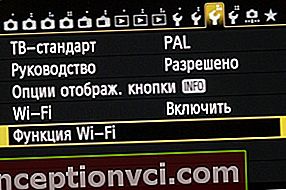 As a result, now the EOS 6D can exchange images with other cameras and smartphones, be controlled from a smartphone (computer), print photos via Wi-Fi, upload images to the Internet, and also connect to a TV (via DLNA). The proprietary EOS Utility application is fast and smooth.Built-in GPS will appeal to photographers who love to travel (location data can be recorded in every frame). Even in the off state, the camera records all movements, while you will not see the GPS-tag, but, for example, the social networks VKontakte or Facebook will pick up your geodata automatically.
As a result, now the EOS 6D can exchange images with other cameras and smartphones, be controlled from a smartphone (computer), print photos via Wi-Fi, upload images to the Internet, and also connect to a TV (via DLNA). The proprietary EOS Utility application is fast and smooth.Built-in GPS will appeal to photographers who love to travel (location data can be recorded in every frame). Even in the off state, the camera records all movements, while you will not see the GPS-tag, but, for example, the social networks VKontakte or Facebook will pick up your geodata automatically.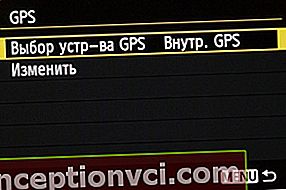 If someone does not need GPS, then it can be turned off.
If someone does not need GPS, then it can be turned off. Shooting quality
It turns out that the EOS 6D at high ISOs produces better photos than the 5D Mark II and Mark III! True, the difference is so insignificant that it should not even be taken into account. But it's still nice to know that your camera shoots a little better than the more expensive 5D Mark III. Video
The video is written in IPB or ALL-I format using the H.264 codec, you will not record more than 30 minutes or 4 GB (the camera continuously cuts 4 GB video). Unfortunately, the EOS 6D only shoots Full HD video at 24 and 25 fps (in HD resolution, 25 and 50 fps are available). A monaural microphone is hidden under the inscription with the model name.The video quality (especially in low light) is excellent! In this case, the correction of chromatic aberrations and vignetting occurs automatically. In general, you will not find anything better in this price segment. Pros:
- the camera body is made of magnesium alloy;easy, convenient and intuitive menu, flexibly customizable buttons;shooting in HDR mode;good focusing (especially in low light);excellent image quality (even at high ISO values);availability of Wi-Fi and GPS. Minuses:
- deliberately simplified menus for ISO, metering, white balance;no built-in flash;only one slot for a memory card and only for SD cards;no headphone output, only HDMI mini;plastic display protection.*********
Conclusion
The Canon EOS 6D is a great choice for hobbyists and even professionals. However, there are some drawbacks that may upset you. Let's take a closer look at them.For the EOS 6D, the manufacturer gives a 100,000 shutter speed guarantee, for the 5D Mark II and Mark III - 150,000, the maximum shutter speed is 1/4000 sec, the LCD with an air gap and without a protective coating (even on the EOS 650D the LCD is better protected). For some reason, the menus for ISO, metering and shooting method have been simplified. Hid white balance in Q.Menu.The main competitor to the Canon EOS 6D is the Nikon D600. Canon is inferior to its competitor in most parameters: the number of pixels is less (20 megapixels versus 24), no built-in flash, lower burst frame rate, no full HDMI-out, autofocus works worse, camera makes more mistakes when metering exposure, memory card slot just one, no headphone jack, no time-lapse shooting or timelapse video recording. And the cost of cameras is about the same! Of course, there are also advantages - the presence of Wi-Fi and GPS.Still, the Canon EOS 6D does its job well. It is much better than the 5D Mark II in all respects, but it costs less! If you still have Canon optics, and you really want to switch to a full-frame camera, then the EOS 6D will not disappoint you. However, if you are just starting your acquaintance with full-format cameras, then, as it seems to me, you should still buy the Nikon D600.



















